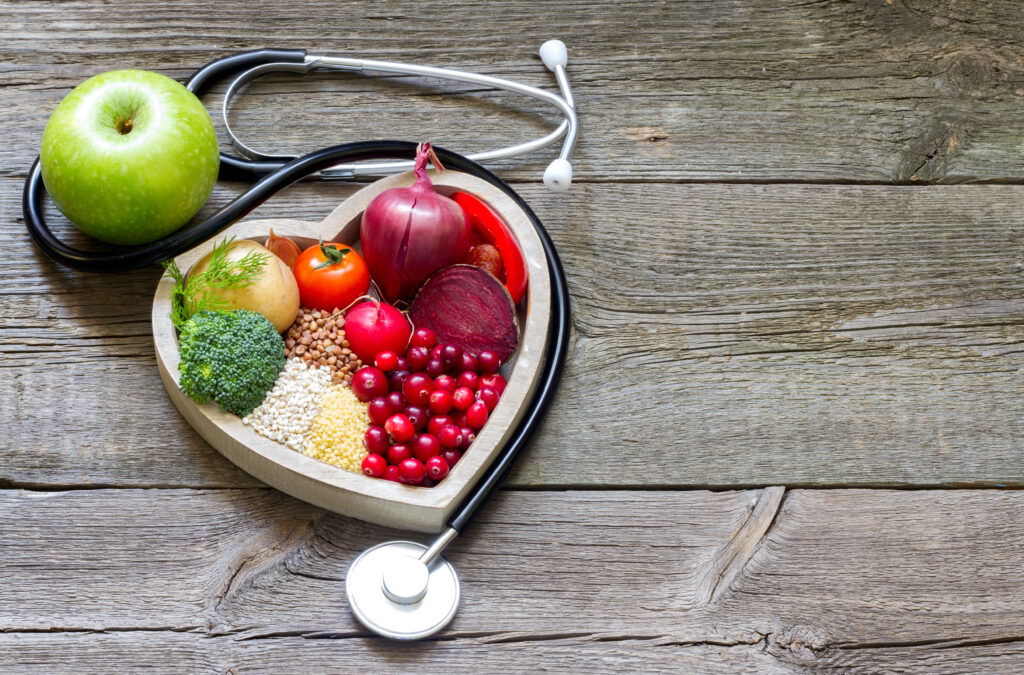- Domaines || de recherche
- Recherche Translationnelle
- Médecine translationnelle transversale (MTT)
- Centre opérationnel de médecine translationnelle (TMOH)
- Service Gestion de projets cliniques (CPMO)
- Centre d'investigation clinique & épidémiologique
- Centre de recherche clinique & translationnelle du Luxembourg (LCTR)
- Biobanque intégrée du Luxembourg (IBBL)
- Disease Modeling & Screening Platform (DMSP)
- Centre du génome Luxgen
- Plateforme de recherche en pathologie (RPP)
- Projets de Recherche
et essais cliniquesSoutenez-nous - Recherche Translationnelle
Actualités
La consommation de fruits et légumes prévient le risque de diabète de type 2
Veuillez noter qu’à l’exception du titre et du résumé, cet article est uniquement disponible en anglais.
17 août 2020
5minutes

Le LIH contribue à l’étude de cohorte du british medical journal
Le Dr Guy Fagherazzi du Département de la santé de la population (DoPH) du LIH a contribué à une étude de cohorte internationale visant à étudier le lien entre la vitamine C et les caroténoïdes plasmatiques et le risque de développement du diabète de type 2. Les résultats, qui mettent en avant une relation inverse entre la consommation de fruits et légumes et l’apparition de cette maladie métabolique, ont été publiés en juillet 2020 dans le prestigieux « British Medical Journal ».
Type 2 diabetes (T2D) has become a major public health crisis over the last decades, with its prevention being a key priority globally. Diet, and particularly high fruit and vegetable intake, has been suggested to play an important role in the prevention of this metabolic disorder. Nevertheless, the lack of reliable evidence on their association remains a challenge. Previous studies suggested vitamin C and carotenoids circulating in the bloodstream as reliable biomarkers of fruit and vegetable intake. Investigating the association between these biomarkers and type 2 diabetes could therefore provide a clearer picture of the link between fruit and vegetable intake and T2D.
To shed light on this scientific question, an international team of scientists led by the University of Cambridge School of Clinical Medicine observed the baseline levels of circulating vitamin C and carotenoids from 9,754 patients with incident type 2 diabetes and from a subset of 13 662 individuals from the European Prospective Investigation into Cancer and Nutrition (EPIC)-InterAct, a cohort study based on over 340 000 adults from eight European countries (Denmark, France, Germany, Italy, Netherlands, Spain, Sweden and the UK). The team used blood samples which had been collected from the participants at the moment of the baseline visit of the EPIC study in order to measure plasma vitamin C, as well as six individual carotenoids, namely α carotene, β carotene, lycopene, lutein, zeaxanthin and β cryptoxanthin. A composite biomarker score was also generated to examine the association of the combination of all seven biomarkers with incident type 2 diabetes.
The scientists found that the average concentration of plasma vitamin C and total carotenoids was 36.3 and 1.3 μmol/L, respectively, among individuals who went on to develop T2D, compared with 42.3 μmol/L and 1.7 μmol/L in the other participants. Moreover, dietary intake of different types and forms of fruits and vegetables, including fruit and vegetable juice, was all positively associated with both plasma vitamin C, total carotenoid concentration and the composite biomarker score, confirming the value of these elements as indicators of fruit and vegetable consumption. When looking at the risk of developing TD2, the team found that higher levels of plasma vitamin C were associated with a lower hazard of the disease. Similarly, all individual plasma carotenoids, with the exception of zeaxanthin, as well as the composite biomarker score were inversely associated with T2D. Specifically, the group observed a 25% reduction in TD2 risk for every 66 g/day increase in total fruit and vegetable consumption. The study therefore suggests that even a minor increase in fruit and vegetable intake in the diet could contribute to decreasing the risk of T2D, regardless of whether the increase is among people with initially low or high intake.
“The potential mechanisms behind the preventive role of fruits and vegetables could be that they contribute to regulating weight and adiposity, as well as glucose and insulin homoeostasis, thereby lowering inflammation levels in the body and resulting in a reduced risk of developing T2D. Another possibility is the influence of fruit and vegetables on the gut microbiota, given their high concentration of fibres and other nutrients that have been shown to be crucial in maintaining a healthy microbiome and immune function”, explains Dr Guy Fagherazzi, Research Leader in Digital Epidemiology and E-health at DoPH who contributed to the publication.
In addition, the seven biomarkers can be used not only to investigate the relationship between fruit and vegetable intake and the incidence of diabetes, but can also help examine the effect of specific types of fruit and vegetables. For instance, α carotene and β carotene were found to be highly correlated with root vegetables (onions, garlic, carrots, etc.). The concentrations of these elements could therefore point towards a potential T2D preventive action for root vegetables.
“Our study was based on a number of cohort participants which was considerably greater than any other previous study looking at the association of fruit and vegetable intake with the risk of T2D. This allowed us to draw conclusions regarding the overall effect of fruits and vegetables on the incidence of this metabolic disorder, but also to study more precisely the impact of the distinct concentrations of specific fruit and vegetable types on T2D onset. Moreover, the fact that we focused our analyses on multiple countries implies that our findings could generally be applicable to the broader European population”, concludes Dr Fagherazzi.
The study was published in the British Medical Journal, with the full title “Association of plasma biomarkers of fruit and vegetable intake with incident type 2 diabetes: EPIC-InterAct case-cohort study in eight European countries”.
Scientific Contact








